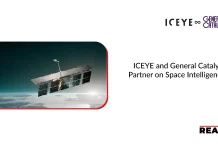As the U.S. Treasury Department designs the guidance that will determine which projects qualify for the 45V clean hydrogen Production Tax Credit (PTC) included in the Inflation Reduction Act (IRA), a new analysis from the American Council on Renewable Energy (ACORE) and Energy and Environmental Economics, Inc. (E3) compares the carbon emissions and production costs associated with the two primary accounting approaches: an “hourly match” requirement versus an “annual match” requirement.
The report, Analysis of Hourly & Annual GHG Emissions: Accounting for Hydrogen Production, finds that the annual matching approach leads to lower carbon emissions than hourly matching in 25 out of the 40 scenarios studied. These scenarios were evaluated across four energy markets, with different combinations of additional wind and solar capacity for both 2025 and 2030. For 34 out of the 40 scenarios, the emissions under the annual matching approach were less than the minimum threshold required to receive the full PTC credit.
Also Read: Piedmont Lithium Partner Sayona Announces Positive NAL DFS and Increased Resource at Moblan
Additionally, in all scenarios – across electricity markets, renewable combinations, and study periods – hydrogen production costs are significantly higher under an hourly matching requirement compared to an annual matching requirement with similar net CO₂ emissions. A market breakdown shows:
- In PJM, hydrogen produced under the hourly matching requirement could cost up to 61% more than hydrogen produced under the annual matching requirement.
- In SPP, production costs increase by up to 66% under an hourly matching requirement.
“Even as we work to give life to an emerging hydrogen economy, there are still fundamental questions concerning the design of the tax credit that will significantly impact its scale, economic feasibility, and associated emission impacts,” said ACORE President and CEO Gregory Wetstone. “Our new study with E3 demonstrates how an annual match accounting approach could help unleash America’s nascent clean hydrogen industry and allow us to continue to lower harmful greenhouse gas emissions.”
The report draws the following key conclusions:
- An hourly matching requirement does not ensure lower greenhouse gas (GHG) emissions relative to an annual matching requirement, and in many cases is less effective at eliminating carbon emissions than annual matching.
- With modest changes to the size and composition of the renewable portfolio to meet electrolyzer demand, hydrogen produced under an annual renewable energy matching requirement results in incremental emissions less than the threshold for the maximum Production Tax Credit under the IRA.
SOURCE: PRWeb




